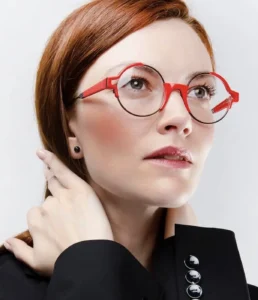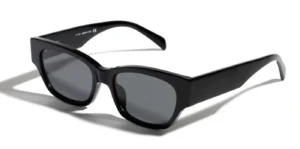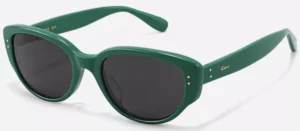When you pick out a new pair of eyeglasses at an optician, the expectation is clearer vision and greater comfort after wearing them. However, sometimes new glasses feel uncomfortable and awkward when worn, which is completely different from the old glasses. What is puzzling is that after testing, all technical indicators of the new glasses meet the requirements. So, Why does it hurt to wear glasses?
Custom eyewear manufacturers and optical shops need to pay attention to the following points when making and recommending glasses to ensure that customers can enjoy a comfortable wearing experience:
1. The Impact of Optical Center Horizontal Distance and Pupillary Distance Deviation
Under normal circumstances, the smaller the deviation between the optical center distance and the pupillary distance, the better, as this ensures a more accurate and comfortable fit when wearing glasses.
If a patient has a significant deviation in their optical center’s horizontal distance and a high prescription in their previous glasses, they may experience discomfort when wearing new glasses with the standard pupillary distance, such as dizziness, distorted vision, or difficulty aligning both eyes. In these cases, the greater the refractive error, the more pronounced the symptoms.
Therefore, when fitting glasses for customers, it is essential to first measure the deviation between the optical center’s horizontal distance and the pupillary distance in their old glasses. Calculate the corresponding prism power at the pupil location to use as a reference for fitting the new glasses.
On the other hand, when viewing near objects, the eye muscles often adjust, which can cause visual fatigue and potentially worsen the prescription. The use of transitional optical center distances may not be suitable for older individuals, as it is best to maintain their original condition to avoid discomfort and other issues.
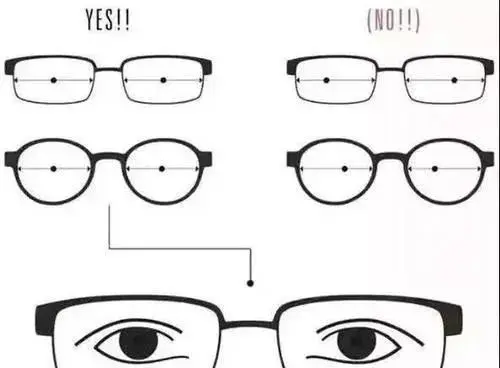
2. The Impact of Pantoscopic Angle
The pantoscopic angle refers to the angle between the plane normal of the frame front and the temple. Common specifications include 6, 8, and 10 degrees.
Many non-standard frames and deformations during the glasses-wearing process can result in the impact of the pantoscopic angle on visual habits.
Since the temple position is mostly connected to the upper part of the frame’s eyewire, and the glasses’ weight creates a gravitational pull, the optical center of the lens is displaced upwards when worn.
For this situation, one solution is to help the patient adapt as much as possible. If the patient cannot adapt, another option is to adjust the pantoscopic angle to be closer to the original glasses.
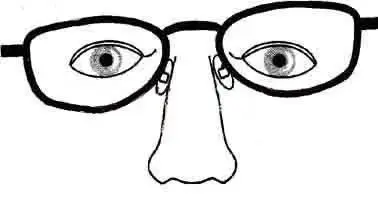
3. Asymmetrical Optical Centers
For patients with high prescriptions and a long history of wearing glasses, the asymmetry of the optical centers in their old glasses may hinder the fitting of new glasses.
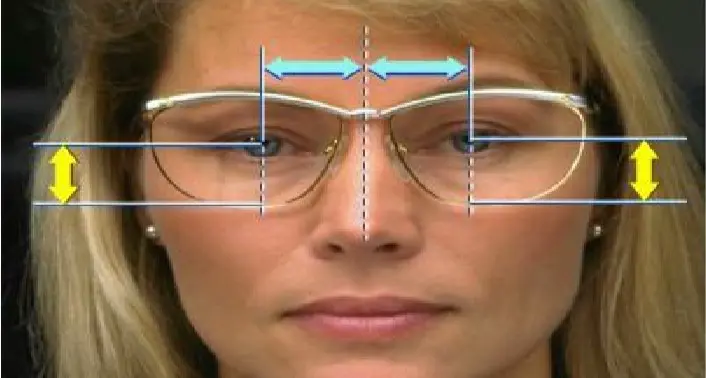
When fitting glasses, it is essential to measure the symmetry of the optical centers in the old glasses. Based on the refractive power, calculate the impact of the prism power at the corresponding pupil position, and make glasses according to the patient’s old glasses’ condition.
This approach is particularly important for some older patients, as it can be challenging to change a long-established habit of wearing glasses.
Although these so-called non-standard glasses may not conform to general standards, they match the patient’s eye condition and provide a more comfortable and natural fit.
For younger patients with lower prescriptions and a shorter history of wearing glasses, it is recommended to have them wear glasses made according to standard specifications.
4. The Impact of Overcorrection
Generally, it is advised for myopia correction to achieve a visual acuity of 5.0. Overcorrection can increase the eye muscle’s adjustment when viewing near objects, leading to visual fatigue and further deepening of the refractive error.
Therefore, if the original glasses are overcorrected, with a corrected visual acuity of 5.2 or higher, it is recommended to adjust the new glasses to a visual acuity of 5.0.
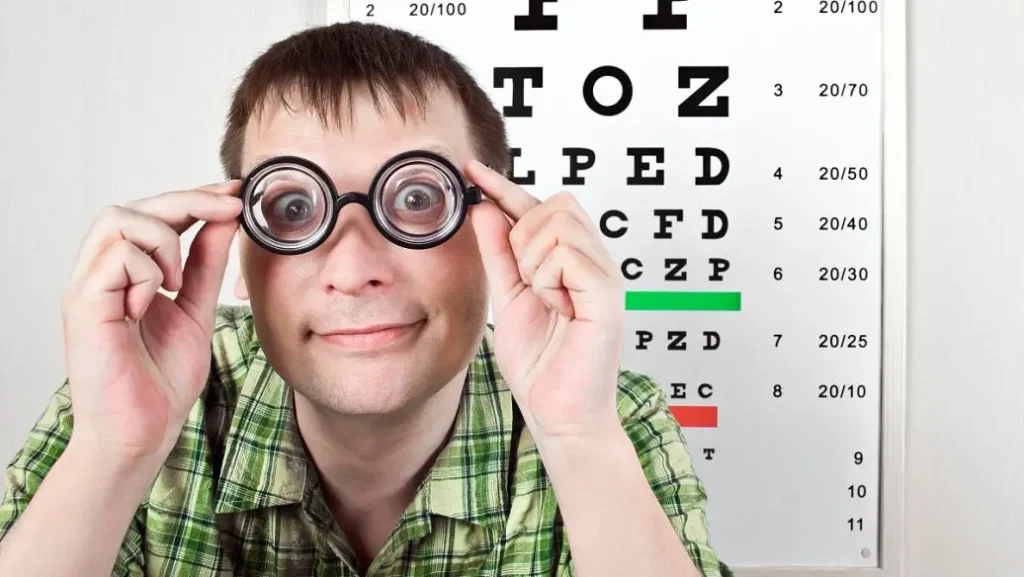
Some patients may experience discomfort when wearing new glasses due to the reduced refractive power, such as difficulty seeing objects clearly. In such cases, the prescription can be adjusted according to individual circumstances, aiming for a normal state close to 5.0.
5. The Impact of Lens Curvature and Astigmatism Axis Differences
A person who has worn glasses with a 600-curve and -5.00D prescription for many years may find it challenging to adapt to lenses with a 300-curve or even lower curvature.
For glasses with astigmatism, the discomfort caused by the difference in the astigmatism axis between the old and new glasses should not be overlooked.
Although the new glasses’ axis may provide the clearest vision, it is not necessarily the most comfortable position for the patient.
Therefore, when patients cannot adapt to the new axis, and it does not significantly impact the corrected visual acuity, the glasses can be made directly according to the old axis.
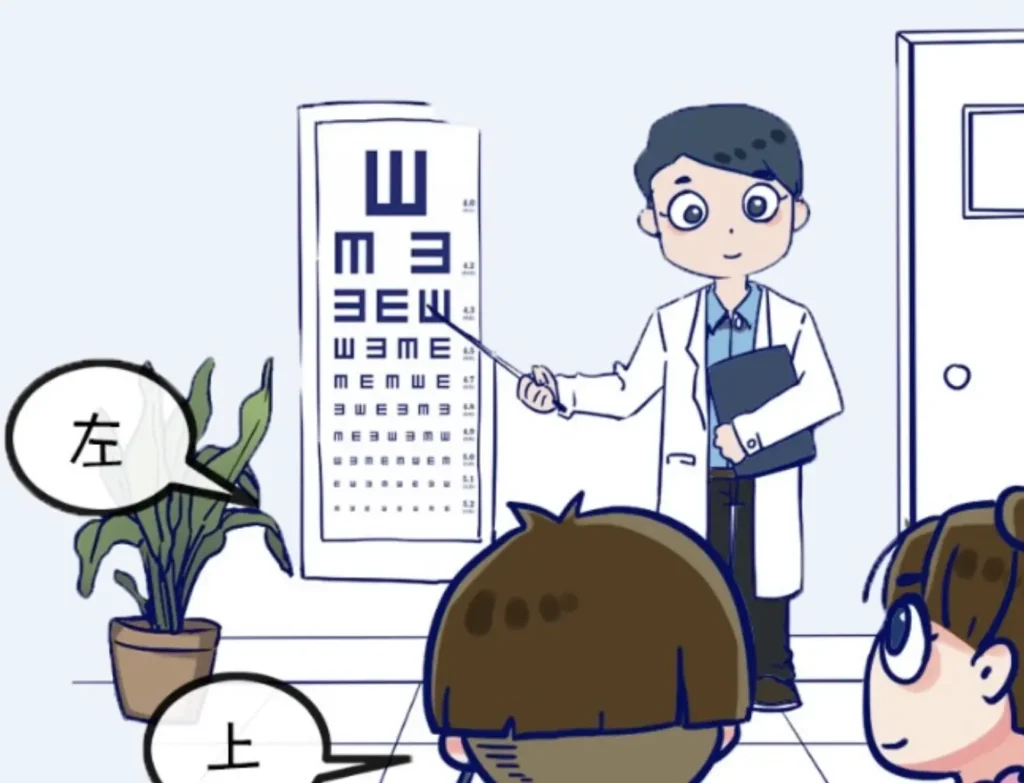
6. Product Issues
(1)Impact of lens material
Different materials like regular glass, ultra-thin glass, and resin lenses have varying refractive indices, light transmittance, and Abbe numbers. This affects the wearing experience for the same prescription.
For example, some people feel dizzy wearing ultra-thin lenses but comfortable with regular glass lenses.
(2)Impact of nose pad height on visual acuity
Nose pad height affects the relative position of the optical center and pupil, and the distance between the lens’ back vertex and the cornea. This impacts actual visual acuity.
For positive lenses correcting hyperopia, the effective lens power increases with the distance between the back vertex and the cornea and decreases with a shorter distance.
For negative lenses correcting myopia, the effective lens power decreases as the distance between the back vertex and the cornea increases and increases with a shorter distance.
(3)Impact of spherical/aspheric, and inner/outer asphericity
Inner aspheric lenses have better image quality than outer aspheric lenses. People used to spherical lenses may feel uncomfortable when switching to outer aspheric lenses.

